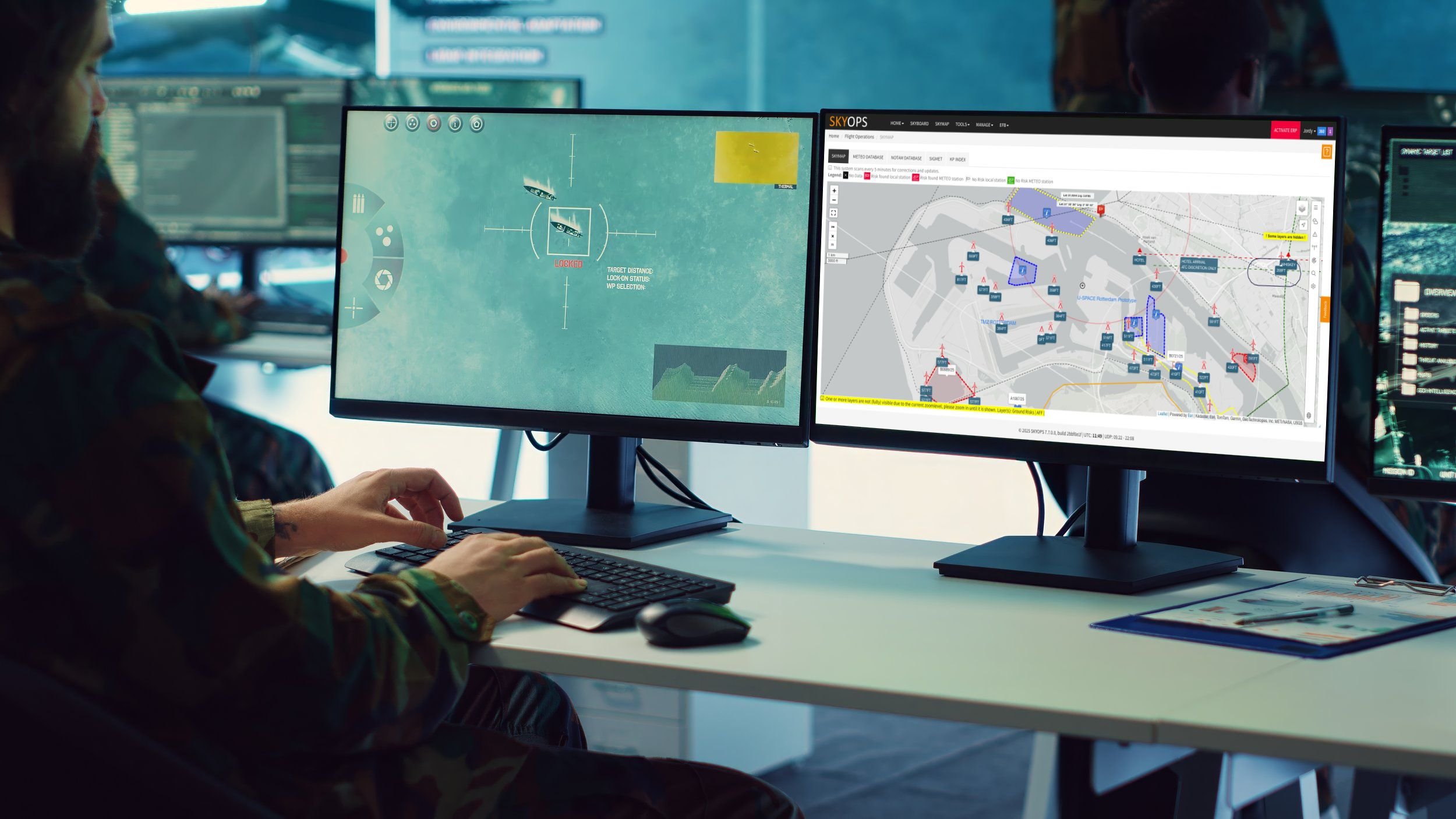
Flight Operations Management
Structure. Oversight. Mission Readiness.
SKYOPS Flight Operations Management is the mission-critical layer for coordinating every aspect of your airborne operations, no matter if it’s manned, unmanned, or hybrid. Purpose-built for law enforcement and defense aviation, it structures operations from scheduling through debriefing with embedded workflows, real-time risk control, and compliance by design.
Whether you’re managing a daily patrol or launching a rapid deployment, SKYOPS turns complexity into operational control. By removing workflow silos and manual bottlenecks, SKYOPS delivers a significant return on operational time, allowing your teams to focus on flying, not fixing fragmented processes. The result is faster execution, fewer errors, and higher mission throughput. All with less administrative overhead.
From Scheduling to Debriefing - Fully Integrated
Flight operations don’t begin in the air—they begin in briefing rooms and dispatch centers. SKYOPS consolidates the full lifecycle of your operation into one workflow. You define mission objectives, assign qualified crew, and verify systems readiness. The platform guides every step, ensuring that only current, trained, and authorized personnel take part. Checklists, ERP access, and pre-configured CONOPS are embedded in the interface. Multi-ship support and guest crew functionality allow for complex deployments across jurisdictions. Workflow management is no longer a bottleneck between departments. Dispatch, safety, flight crews, and maintenance all operate on one shared system, eliminating miscommunication and duplicated effort.
Mission creation with standard or rapid (scramble) planning tools.
Real-time flight tracking and risk re-evaluation
Pre-flight briefings with weather, fatigue, and airspace data.
Post-flight debrief with full logbook and defect capture.
Risk mitigation workflow enforced before launch.
Automated ERP. One-click crisis control. Operation-wide.
Risk Governance That Operates in Real Time
Traditional risk management relies on static documents and human memory. SKYOPS changes this by continuously analyzing live inputs like weather, KP index, crew status, and NOTAMs. Dashboards clearly indicate when mission parameters exceed safe thresholds, and mitigations are not optional - they are enforced. When conditions change mid-mission, the system alerts the crew and updates risk assessments accordingly. Automated flags appear on the mission dashboard, highlighting exceeded parameters, potential system faults, or expired airspace permissions.
One Operational Picture: The SKYBOARD
The SKYBOARD offers a centralized view of every flight: active, planned, or completed. With built-in filtering, operational command sees what matters: missions at risk, flights by time window, and compliance status at a glance. Operations staff can update mission status, review access levels, and maintain mission integrity from a single interface. Export options allowprinting or data handover to Excel or secure reporting templates. Archived flight data remains searchable for training analysis and incident reviews. Automated Discipline for Mission-Ready Crews
SKYOPS ensures that no one flies outside their scope. The system cross-references licenses, ratings, medicals, and mission-specific competencies. If any requirement is missing or expired, the crew member cannot be scheduled. Training updates, expiry alerts, and custom profiles keep every role (from pilot to payload operator) aligned and authorized. Functional competency matrices are visualized per user, with color-coded status indicators and auto- generated recertification reminders sent to the relevant department heads.
SKYOPS Enforces:
1
Role-based permissions by functional competency
2
Training recurrency and alerting before expiration.
3
Integration of training validation into mission scheduling.
Structured Debriefing Feeds Readiness
Flight time is only part of the story. Post-flight workflows in SKYOPS capture all the necessary data, being technical performance, logs, fueling, waivers, defects and feed it back into maintenance schedules, training records, and operational dashboards. It’s not about documentation, it’s about maintaining readiness for the next sortie. Each debriefing can trigger inspection flags, equipment issue logs, and auto-scheduling of follow-up tasks with digital sign-offs.
Emergency Response That Doesn’t Rely on Memory
Emergencies don’t wait. SKYOPS ensures immediate response coordination through built-in checklists and a one-click ERP activation. Custom-configured Crisis Management Teams receive automated instructions and role-specific documentation. Every response is logged and audited, so you stay ready, even in high-stress situations. ERP events are also timestamped and linked to mission IDs, providing full traceability for investigations or after-action reviews.
“SKYOPS eliminates fragmentation, streamlines every mission, and delivers up to 40% more efficiency where it counts.”
# Accountable Manager, Police Air Support Unit

Why It Matters
In tactical operations, structure isn’t bureaucracy, it’s survivability. SKYOPS embeds discipline, visibility, and readiness into every flight, every role, and every department. It doesn’t just help you fly. It helps you operate - with confidence, precision, and full control.
→ Ready to align your flight operations with tactical reality?

